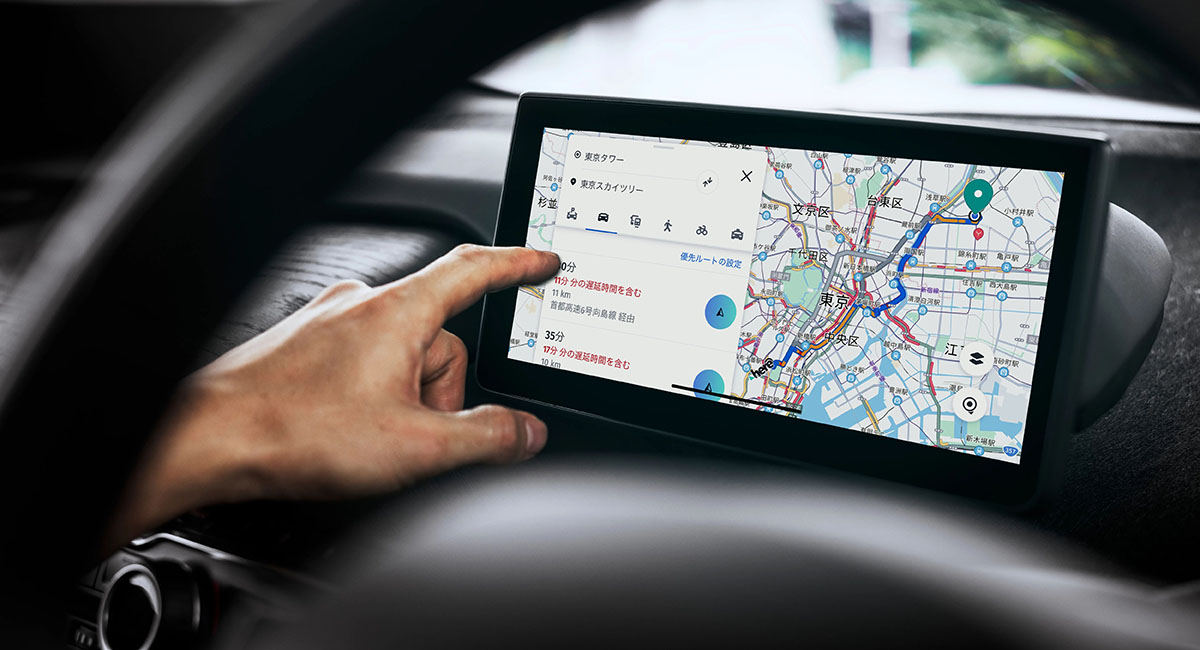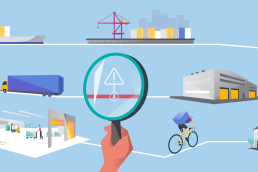Here at Local Eyes, mapping is at the heart of everything we do. But maps have changed. 20 years ago, maps were unwieldy foldouts. Plus there was no traffic information apart from occasional radio announcements.
Fast forward two decades and the simple map has evolved into integrated location intelligent software. So what’s the future of mapping? And where might it lead us in 20 years’ time?
 The Pain Of Paper Maps
The Pain Of Paper Maps
Picture this: a family holiday in an unfamiliar location. The whole family and their luggage in the car, excited to get away. But there’s a problem. Neither parent knows where they’re going.
They’ve got a rough idea of the direction and a folded paper map. The map is creased; it was printed a few years ago so it doesn’t show newly-built roads. It doesn’t tell you about the roadworks or traffic jams. It’s difficult to read whilst driving.
The person in the passenger seat is not an experienced map reader. They’re doing their best. But it’s frustrating. There are arguments. They get lost once or twice…
Emerging Satellite Navigation
The inspiration for today’s location intelligence really grew out of the introduction of satellite navigation products. In the early days, navigation was as simple as an arrow on a screen.
That could be the screen of a personal digital assistant (PDA) or early incarnations of smartphones – small devices that weren’t very sophisticated by modern standards.
They would get you from A to B on major routes but only if you were located in a major country, in a major city or near a major highway. There was no coverage for smaller regions. In fact, coverage was limited no matter what your location.
Personal Navigation Devices
Then in 2006 we got live traffic information. And moving forward we started to see an increase in features. Innovations like toll costs, the weather and fully customizable navigation systems emerged.
Dedicated personal navigation devices (PND’s) which could be installed in vehicles started to include options such as the fastest route and the shortest route. They became really popular for a time but now they’ve been superseded by smartphones and in-built navigation systems.
Future Projections
So what’s the future of navigation in the next 20 years? Autonomous driving cars are already with us and the future will be with us sooner that we think.
There are five levels of autonomous vehicles and we’re currently at Level 2 which is partial automation. So the technology is there for the driver to go handsfree, to receive brake assistance and adaptive cruise control. The next step is to be able take your eyes off the road.
Level 5 is full automation. That will change everything. It means people can commute longer distances and work or relax whilst commuting. When they arrive at work, their vehicle will self-park in a convenient or cheaper location. The smart city will play a big part here and the whole infrastructure will need to be set up in the right way.
There is a revolution underway in the cockpit of the vehicle. Car manufacturers are currently embracing ‘Head-Up’ Displays (HUD) where navigation is projected onto the windscreen. They’ll be less an interface and may soon become standard issue, just as back–up camera’s are today. As vehicles become increasingly autonomous, they’ll be more dependent on AI and Location Intelligence.
The consumer is really driving the development of a seamless directional experience, trusting in the technology to transport them safely and precisely. There’s less dependence on paper maps and less reliance on the driver to navigate using signs and road names.
With these developments, there’s a greater need for a background data platform to build trust in the software as well as the hardware so that customers can rely on robust secure data more than people expect.
The Future Of Mapping
Whether you’re looking for geomarketing tools to pinpoint potential markets or you’re seeking up-to-the-minute traffic information (ours updates every 60 seconds), Local Eyes has the vision you need for game-changing location intelligence.
From transport and logistics to smart cities and government, Local Eyes has proven expertise and experience in delivering effective location-intelligent solutions.
And with 4 in every 5 new cars sold in Europe and North America leveraging HERE mapping, the HERE Location Platform is an industry leader in mapping for automated vehicles – with high precision, real-time maps already covering more than 70 million kilometers of roadways across 200 countries.




